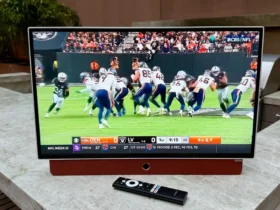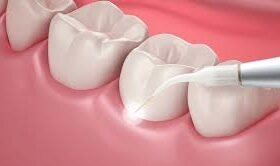From everyday household items to cutting-edge industrial applications, PVC (Polyvinyl Chloride) is a stalwart of modern manufacturing. It’s one of the most widely used materials across the globe, known for its remarkable versatility and durability. Surprisingly, this marvel of chemistry has been around since as far back as 1872, proving that even in a fast-paced world, some things endure.
If you need a versatile and durable material for your project, you should consider resilient Vekaplan CX Duo PVC sheets. With an inner core made from regrind white PVC and a matte white outer layer, these sheets have superior strength and printability. This unique construction is lightweight and affordable, making it an efficient choice for a variety of applications. Their uses include digital printing, as well as hygienic cladding in commercial bathrooms, kitchens, washrooms, and hospitals. Let’s shed some light on why this material continues to be a cornerstone in many different sectors.
Properties of PVC Sheets
PVC materials like the CX Duo plastic sheets have many significant characteristics that make them a go-to choice for different applications. One of the standout features of this material is its relatively high density compared to other polymers. This density contributes to its strength and durability.
PVC is popular for its hardness. It holds up well under pressure and has an impressive tensile strength, so it can withstand a good deal of stress before breaking. This makes it ideal for applications where long-lasting performance is crucial. It’s also highly affordable and readily available. It’s a cost-effective material that’s easy to source, which explains why it’s so commonly used across different industries. When you need something reliable without breaking the bank, PVC often comes to mind.
Another great aspect of Vekaplan CX Duo PVC sheets is their nature as a thermoplastic. This means that you can shape and form them when heated and they retain their shape upon cooling without much degradation. This allows for versatility in manufacturing processes, making these sheets suitable for a wide range of products. They also won’t degrade quickly under the sun’s harsh rays.
In fact, rigid sheets can last between 50 and 80 years even when exposed to sunlight. This means that they’re a durable option for outdoor applications. Their weather resistance adds to this durability, allowing them to withstand various environmental conditions without deteriorating.
Despite being lightweight, PVC doesn’t compromise on strength, which is a rare but valuable combination. It’s also resistant to fire and mould, adding to its appeal when you use it in environments where these hazards are a concern. These attributes collectively make PVC a highly versatile and reliable material.
However, it’s important to consider a couple of drawbacks associated with this material. One significant limitation is its low heat stability. PVC doesn’t fare well at high temperatures, and when it melts or burns, it releases toxic fumes. This characteristic requires careful handling and specific considerations during manufacturing and end-use, particularly when the application involves high temperatures or potential fire hazards.
Where are PVC Sheets Used?
PVC is one of the most adaptable materials you will encounter; it is used in practically every sector of the economy. For example, the CX Duo plastic sheets have a matte white outside layer and an interior core composed of regrind white PVC. Better printability and increased strength are the outcomes of this. Not only is it ideal for digital printing, but it also works well for a variety of other uses, such as sanitary cladding. Its construction, which balances performance, weight, and cost, consists of a hard PVC top layer, foam core, and VEKAPLAN SF backing.
Beyond this specific product, PVC’s versatility truly shines. It’s used in drainage and water service pipes, window frames, medical devices, wire insulation, and much more. In the construction industry, unplasticized PVC is prized for its stiffness and longevity. Even after years of use, it maintains its integrity, which makes it a great substitute for wood in window and door frames. This not only cuts costs but also offers big energy savings.
PVC is a notable material in the electrical industry due to its exceptional electrical insulation qualities and resistance to flames. It is the preferred solution for cabling because of these features. Its use also encompasses commonplace products like stationery, roofing membranes, flooring, and even seat coverings and automobile interiors. Clothes, cling film, packaging, credit cards, and vinyl records all contain it.
What makes this material particularly appealing is the variety of colours it comes in, enhancing its aesthetic versatility. Whether you’re aiming for functionality or a specific look, PVC delivers. This adaptability, combined with its durability and cost-effectiveness, explains why PVC remains a popular material across so many different fields.
PVC vs Other Plastics
When it comes to rigid plastics, PVC stands out for its impressive strength and durability. It’s tougher than many other plastics, making it a go-to material when you need something that can handle impacts and wear over time. Now, if I compare it to ABS, another durable plastic, ABS tends to be more durable and affordable. However, its rigidity can be a downside in some scenarios, which is where PVC’s flexibility becomes an advantage.
Similarly, high-density polyethylene (HDPE) is another strong material when it comes to plastics. It’s stronger than PVC, but this strength comes at a higher cost. PVC, on the other hand, offers a more budget-friendly option while still providing resilience for many applications. Plus, PVC’s flexibility gives it an edge in certain uses where rigidity might be a drawback.
How to Work with PVC Sheets
Working with PVC sheets is surprisingly straightforward, whether you’re shaping, cutting, or bending them. A decent craft knife will be sufficient if you’re dealing with thinner sheets (around 5 mm or less). For thicker sheets, pretty much any tool you’d use for wood will work just as well. Just make sure your blades and bits are sharp, and carbide-tipped or combination blades are best.
If you need to create specific shapes, you’ll need a jigsaw. Bending PVC is another great way to get creative with this versatile material. While you shouldn’t rely on bent PVC for structural integrity, it helps you form frames and support other materials. Some folks even use it as a cost-effective template to save money.
Applying a bit of heat makes bending PVC easy. Often, something as simple as a hair dryer or a gas stove can provide enough warmth to make the material pliable. Just take your time and let it cool naturally before moving on with your project.
Read Also:- Insulation in Plastic Windows














Leave a Reply